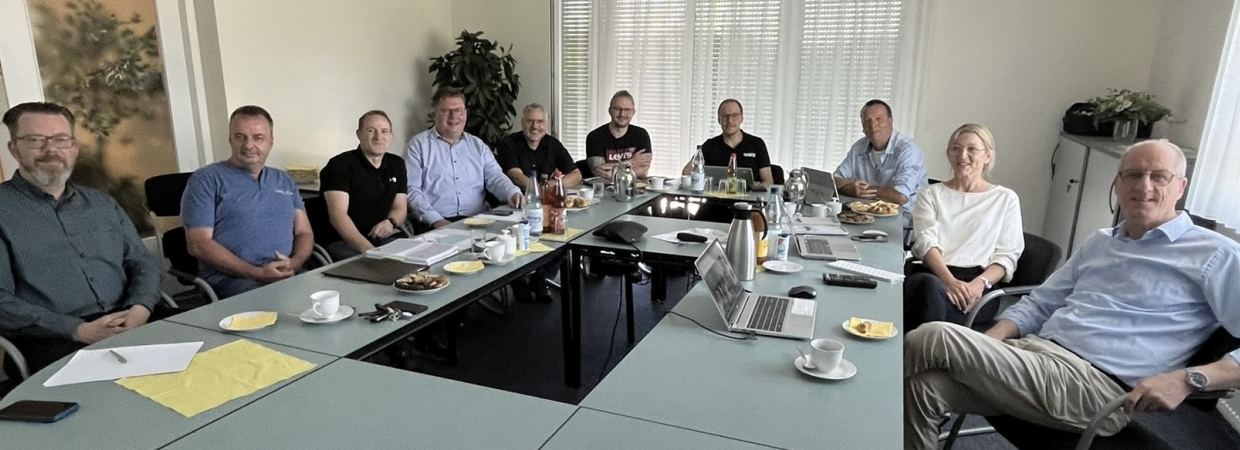english – Pipe bursting procedure: Working group gives practical tips
Has everything already been said about the pipe bursting procedure? Not at all! A team of experts at RSV is currently working hard to shed light on new aspects and make the technology for renewing drains even more understandable.
Estimating useful life, use in asbestos cement pipes, testing the surrounding soil - these and other aspects are currently being discussed by the pipe bursting procedure working group. "We are noticing that interest in the bursting procedure for sewer renovation is growing because it can also be used to renew severely damaged pipes without the need for trenches," explains Heiko Weber, head of the bursting procedure working group. Not only the costs, but also the question of the sustainability of trenchless procedures is increasingly coming into focus. "We benefit from the fact that factory-manufactured pipes are used, which means that their useful life can be extended accordingly." This point is to be incorporated into the factsheet revision to an even greater extent than before.
The pipe bursting procedure - also known as pipe bursting - has been used worldwide for many years as a renewal technique for drains. It is mainly used when the dimensions of existing sewers need to be enlarged.
Although rules and regulations already provide extensive guidance, the RSV working group sees a current need for dialogue.
At the current meeting, the working group of experts from network operators, pipe manufacturers and engineering firms discussed important revisions that will now be incorporated into the revision of factsheet 8.
Practical tips, taken literally
An important addition is the consideration of the surrounding soil. While a soil survey is prepared for the entire construction site area in open construction, only the soil investigation for the immediate vicinity of the existing pipeline is decisive for the pipe bursting procedure. This is to be taken even more into account in the next version of the document. It will also include practical tips for assessing soil quality. This is to be taken literally: "You can check what type of soil you have by moulding a ball with your hands. This is then decisive for the choice of process variant," says Weber.
The factsheet goes into more detail than before about the different variants and their framework conditions. "The planning phase is particularly important - so we provide detailed information on this in the factsheet," says chairman Heiko Weber from Oppermann Ingenieure.
Note on use in asbestos cement pipes
The pipe bursting procedure is currently the only published procedure in Germany recognised by the DGUV as having low emissions for the maintenance of drains made of asbestos cement (the publication of pipe lining is expected shortly). "In joints with a cadastral obligation for AZ pipes, it is a globally recognised method for replacing both drinking water pipelines and drains made of asbestos cement with modern pipelines without trenching," explains Johannes Bilgen from Tracto, a global supplier of machine technology.
